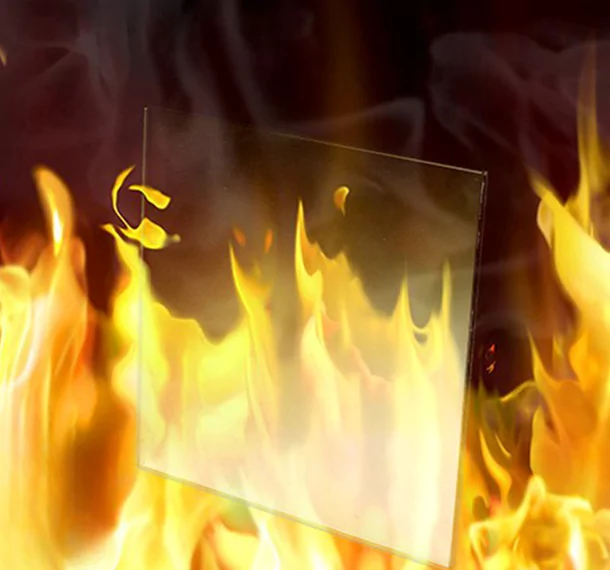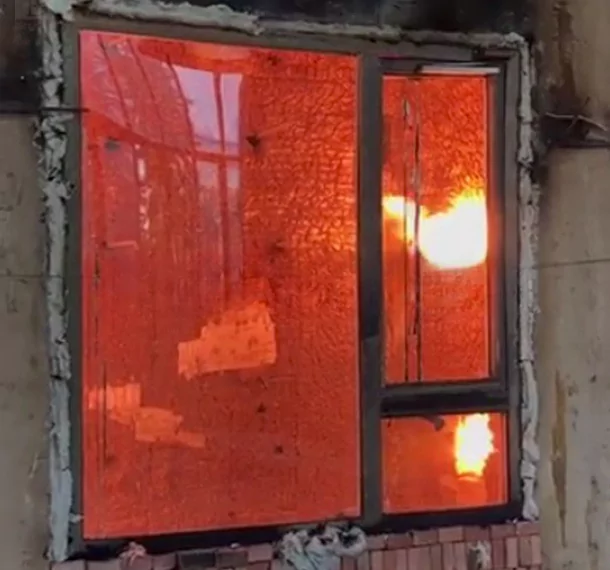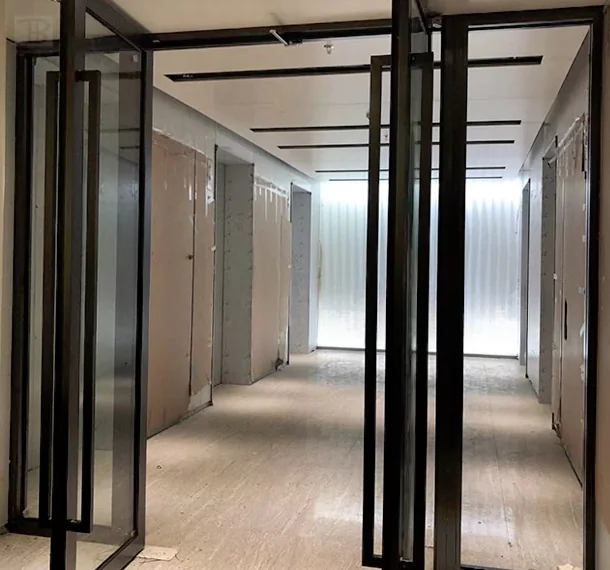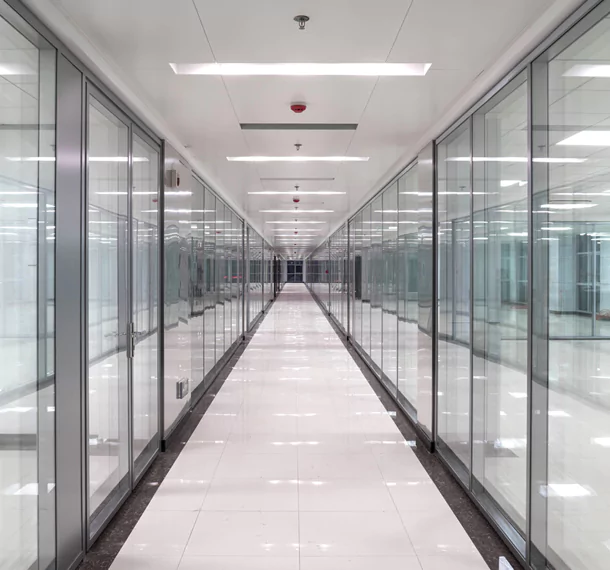
SINGLE LAYER FIRE-RATED GLASS
Learn more
DOUBLE LAYERS FIRE-RATED GLASS
Learn more
FIREPROOF GLAZING WINDOWS AND DOORS
Learn more




When we think about the future of architecture and design, one material stands out for its remarkable ability to blend safety with beauty: cesium potassium fire-rated glass Sweden . this innovative product is not just a testament to advanced glass manufacturing; it represents a harmonious fusion of functionality and aesthetic appeal that is essential in modern architectural practices across the eu in Sweden.
Imagine a space where fire protection is paramount, yet visual clarity remains uncompromised. cesium potassium fire-rated glass Sweden offers just that—a high degree of optical clarity that allows natural light to flood in while maintaining robust fire resistance. this unique characteristic makes it an ideal choice for architects who are passionate about creating environments that inspire and uplift without sacrificing safety. the glass’s clear, monolithic appearance aligns perfectly with minimalist design principles, allowing architects to craft spaces that are both striking and secure.
However, it’s important to recognize that the integrity of fire-rated glass extends beyond the pane itself; it encompasses the entire glazing system. this systemic nature means that every component—from frames and seals to installation materials—plays a crucial role in achieving optimal performance and compliance with safety standards. in the eu, manufacturers and installers must ensure compatibility among all elements of the assembly to uphold the declared fire rating effectively.
The journey towards achieving this level of safety requires meticulous attention to detail during installation processes. each component must be certified according to specific test evidence, ensuring they work seamlessly together as intended. this collaboration between various elements not only enhances fire protection but also fortifies trust in architectural integrity in Sweden.
As we look forward into an era where innovation meets responsibility, embracing materials like cesium potassium fire-rated glass Sweden inspires us all—architects, builders, and occupants alike—to prioritize both beauty and safety in our built environments. by integrating such advanced solutions into their designs, professionals can create spaces that do more than just house people; they can nurture communities by providing safe havens filled with light and inspiration.
As we continue pushing boundaries within architectural design through innovations like cesium potassium fire-rated glass Sweden , remember our commitment to creating environments where aesthetics enhance functionality without compromising on safety standards—a true reflection of thoughtful design for a brighter future.
Fire-rated glass is an essential element in building design and construction, providing protection from flame spread. This comprehensive guide explores its categories, testing processes, uses, level systems as well as selecting appropriate glasses to meet individual situations - an invaluable source of advice for architects, builders and homeowners alike.
Fire-rated glass operates by withstanding high temperatures for an extended period, effectively containing fire and preventing its spread while maintaining building safety. This guide will outline its many advantages as well as its role in building safety regulation and benefits to regulation.
Core concepts outlined by this guide include an in-depth examination of fire ratings, various types of fireproof glass products available on the market today, testing procedures used by testing agencies and certification authorities, as well as real life applications in various building sectors.
Finally, this comprehensive guide equips readers with the knowledge necessary to make educated decisions regarding fireproof glass products and create a safer, more resilient built environment.
Robust Glass: Protecting Homes and Businesses
Fire resistant glass is an essential feature that provides essential protection in buildings. Engineered to withstand extreme temperatures, fire resistant glass helps delay fire's spread while providing time for evacuation. Multiple factors contribute to this material's remarkable fireproof qualities including its unique composition and construction; glass often features multiple layers joined together with noncombustible material such as ceramic or silica in between them for increased resilience.
These layers are strategically bonded together to form a barrier against heat penetration. If exposed to high temperatures, the outer layer of fire resistant glass will harden, blocking any passageway for flames and smoke.
Additionally, fire-resistant glass' inherent strength ensures it can withstand significant pressure without succumbing to damage or collapse during structural fires, providing crucial protection that saves lives while mitigating property loss. This type of material plays an essential role in safeguarding lives while mitigating property damages.
Fire-resistant glass has many uses within commercial structures, from fire doors and windows to partitions and partitions.
Installing fire resistant glass is an invaluable investment that can bring peace of mind and increase overall building safety. Fire resistant glass should be considered part of fire safety measures to protect lives and property against its devastating effects.
Glass for Fire Protection: Raising Safety Standards
Construction and design places an utmost emphasis on safety. Fire-resistant glass (known as fire protection glass or FPG) plays a vital role in protecting lives and property against flames by withstanding extreme temperatures - effectively containing their spread while providing evacuation routes. This type of material offers vital firefighter shelter when exposed to flames.
Installing fire protection glass into windows, doors and partitions significantly boosts building safety. Not only does it serve as an essential barrier but it can also lower risks associated with toxic fumes that come off of burning materials - providing for a more controlled and protected environment in case of fire emergencies.
Fire protection glass comes in different thicknesses and designs to meet the specific needs of various building structures.
Fire-retardant properties make this material an excellent choice for both residential and commercial buildings, contributing to safer, more resilient built environments.
Flameproof Glass in Combatting Structural Fires Building materials play an essential role in mitigating structural fire risks and protecting lives, with anti fire glass being an indispensable element in this defense system. Employing cutting-edge manufacturing processes and using proprietary compounds, anti fire glass provides essential protection from rapid flame spread and heat accumulation. As it provides exceptional resistance against the destructive forces of fire.
Integrating fire resistant glass into building designs brings numerous advantages. First, it acts as a key barrier against fire spreading across multiple floors by confining it and slowing its escalation. Second, it helps preserve structural integrity of buildings by withstanding intense heat loads reducing risks of catastrophic collapse and providing clear visibility during emergencies allowing people to evacuate safely. Finally, fire resistant glass makes evacuation safer by creating clear visibility during emergency evacuation situations, giving people time to make safe exits safely.
Utilize anti fire glass in windows, doors and partitions to create fire-resistant zones within buildings. Assess which type of fire resistance will best fit with building usage and occupancy before regularly inspecting for signs of damage or wear-and-tear.
Comprehending Fire-Rated Glass Specifications
When selecting fireproof glass for construction projects, it is vital that you fully comprehend its specifications. These specifications outline its capabilities in an intense heat situation and should provide adequate protection from high temperatures.
One important consideration for fireproof glass is its rating, which measures how long it can remain undamaged in fire conditions. Furthermore, other elements to take into account may include type, thickness, and any additional layers which might increase its fire protection properties.
Careful consideration of these specifications allows you to make an informed decision that meets all your fire safety requirements.
Employing Fire-Resistant Glass in Construction
Fireproof glass provides an indispensable safety measure in modern construction projects, offering exceptional protection from fire. It helps create safe evacuation routes by slowing its spread across building structures - giving occupants extra time to escape dangerous situations without worry or delay. Furthermore, fireproof glass helps maintain structural integrity during a fire event by maintaining structural integrity during an inferno, thus mitigating damages to property and lives alike.
Thermal insulation capabilities add energy efficiency, leading to reduced heating and cooling costs over time.
Fire-resistant glass has become increasingly popular as an application material, such as commercial buildings, residential structures and public facilities.
Fire Protection Glass: Types, Applications and Testing Standards
Fireproof glass plays a vital role in protecting buildings and their inhabitants from fire damage. Engineered to withstand extreme temperatures without disintegration or ignition of flames or heat propagation, it prevents their spread across building surfaces and ultimately safeguards lives and assets from potential disaster.
There are various kinds of fire protection glass available today, such as wire glass, tempered glass, laminated glass and specialty glasses. Each type offers its own set of properties and uses.
Wire glass is often chosen for fire-rated enclosure windows and doors, while tempered glass is popularly utilized in curtain walls and skylights. Laminated glass, comprised of multiple layers bonded together by an interlayer material, offers superior resistance.
Inspection protocols for fireproof glass are established by organizations like the National Fire Protection Association (NFPA). These standards ensure that fire protection glass complies with safety requirements.
Fire protection glass is essential to creating a secure built environment. By restricting fire's spread and helping ensure life safety and property protection.
Fire-resistant glass, also referred to as fireproof or heat-proof glass, uses an innovative combination of materials and structural design to withstand intense heat. This advanced technology depends on key elements; among them is a polymer-infused core that acts as a heat barrier while being surrounded by layers of regular glass that absorb heat while mitigating thermal stress.
Additional coatings may also be applied to glass surfaces to increase their fireproof capabilities and slow the rate of temperature increase. Such reflective heat-reflective layers help reflect away from temperatures rising too rapidly, effectively mitigating potential fire risks.
Fire-resistant glass plays a pivotal role in protecting structures and people from fire's devastating effects, by withstanding extreme heat resistance for extended time for removal of hazardous debris without incurring major building damages.
Selecting the Appropriate Fire Rated Glass
Fire-rated glass is essential in many applications and must meet various safety standards, so when choosing a type, it's essential to take multiple factors into account when making a selection. These factors include your desired level of fire resistance (fireproof glass comes in various thicknesses and classifications that provide different amounts of time before transmitting heat or flames through). It is also crucial to take into account its intended application: for instance a fireproof pane in a doorway will have different requirements than one used in pane.
Furthermore, its aesthetic should be taken into consideration to ensure it complements its surroundings. Finally, professional assistance may be necessary in selecting an ideally suitable fireproof glass product to meet your unique requirements.
Protective Glass Units in Buildings: Complying With Standards mes When designing new age buildings, meeting fire safety regulations is of utmost importance. Intumescent Glass Units play an essential part in this effort by acting as an essential barrier against flame spread. Constructed to withstand intense temperatures for specified time periods and limit fire and smoke transmission, Intumescent Glazing systems often undergo stringent standards to ensure they provide protection to both occupants and property in case of fire or smoke exposure. Building codes across jurisdictions often set stringent requirements on these glazing systems so they protect occupants as well as property in case of fire outbreak.
Installing fire safety glazing units into building designs to meet specific fire resistance ratings - for instance three-hour ratings - is standard practice. These ratings indicate the length of time an inferno may last before its effects become manifested in flames.
Understanding building codes and the application of fire safety glazing systems are integral parts of construction projects for architects, engineers, and builders involved in such endeavors. Such knowledge ensures that structures constructed meet adequate fireproofing measures that protect lives and assets in case of fire hazards.
Innovative Fire-Protection Glass Innovations
Building protection is of utmost importance in all industries, with glass playing an instrumental role in safeguarding buildings. As industry demands increase for improved safety and performance, fireproof glass has undergone radical innovations to provide greater resistance against heat; thereby safeguarding both occupant well-being as well as valuable assets.
One such innovation is the invention of fireproof glasses with special interlayers to trap heat, preventing its transmission through glass surfaces. Furthermore, some versions feature coatings designed to redirect radiant radiation, further strengthening their fire-retardant capabilities.
Innovative advances in glass manufacturing processes have resulted in thicker and stronger fire-protection glasses. These thicker panes offer increased strength against intense heat. Furthermore, these innovations have created fire-protection glasses which not only work more effectively but are also stylish - perfectly blending safety with modern design aesthetics.
Fire-rated glass is a crucial element in modern architectural design, combining aesthetics with safety. Let's delve into three successful projects where fire-rated glass Sweden has been skillfully utilized as glass doors or glass walls:
1. Project Name: Skyline Tower
- Description: In the prestigious Skyline Tower project, fire-rated glass Sweden doors were seamlessly integrated into the design, enhancing the overall aesthetics of the space in Sweden.
- Effects: The use of fire-rated glass doors not only met safety regulations but also allowed for natural light to flow through, creating a bright and airy environment.
2. Project Name: Zenith Hotel
- Description: At Zenith Hotel, innovative fire-rated glass walls were incorporated to divide spaces while maintaining an open and modern feel.
- Effects: The installation of these fire-rated glass walls added a touch of sophistication to the hotel's interior, providing both safety and style.
3. Project Name: Innovation Hub
- Description: The Innovation Hub project showcases how fire-rated glass can be used creatively to foster collaboration and transparency within workspaces.
- Effects: By utilizing fire-rated glass walls in meeting rooms and common areas, the Innovation Hub promotes an open environment while ensuring compliance with safety standards.
These projects exemplify how fire-rated glass can be leveraged not only for its protective properties but also as a design element that elevates architectural spaces.
Fill the form below to get in touch with us.
Our Location in Sweden:Flygets Hotellväg, 438,Sweden,Sweden
VIDRIO RESISTENTE AL FUEGO Tizayuca
FIRE-RATED GLASS Prizren
FIRE-RATED GLASS Gujarāt
ОГНЕЗАЩИТНОЕ СТЕКЛО Нефтеюганск
FIRE-RATED GLASS Uttar Pradesh
VERRE COUPE-FEU Nancy
شیشه آتش نشانی گولمه
VETRO TAGLIAFUOCO Padova
防火玻璃 嘉義
VIDRIO RESISTENTE AL FUEGO Portland